


Will SAM be a frustrated adolescent with the physical changes that linger on the horizon? No spots or boils as far as we can see for the mo and no pubic hair is forming that might cause alarm for a mutating machine. Maturity is however a major concern and perhaps a worrying one when taking into account the dysfunctional family background SAM has been born into.
There is however a grain of hope that the makers of SAM will manage to gain its confidence with their wholehearted belief in the power of design. As pointed out in our first post, SAM's construction relies on three fundamental issues: Hardware, software and design. Design is perhaps the operative word here. It is not just simply a question of aesthetic beauty, design is a thinking strategy needed in all phases of the creative process and implies long sessions of reflective cerebral activity comforted with a touch of music for the muse.
SAM's design has evolved a fair bit over the past few weeks and it has been the fundamental issue in our daily conversations. Although it appears quite a simple design, not really veering too far from our original sketches, it has been the details that have animated the discussion the most. Precise placement of SAM's moving parts, the muscles of the machine, needed careful thought.
As mentioned in an earlier log, we had indulged in drawing up spec sheets and construction plans to better understand the possibilities and potential problems. Despite our clear lack of drawing skills, it was an essential, albeit grueling process to undertake. Essential because drawing up our design concept as precise as possible was also a means for writing up a little budget and making a list of items necessary for SAM's construction. Grueling because admittedly we were scratching our heads most of the time. The mental juggling of visualising objects in space can be a little disconcerting without the luxury of having a more hands on approach. The fact of the matter though was that we didn't have the parts to play with.
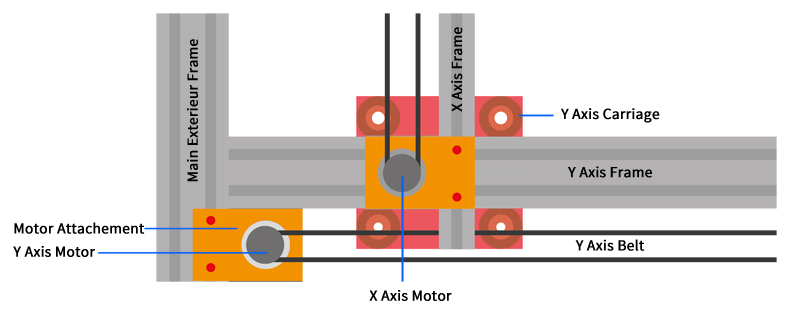
Carriage design. Top view - Team Spam - 2014
But now we do! SAM received his brand new bodily parts this week and it must be said that the project has progressed in leaps and bounds. It also should be said that our efforts in scribbling make shift designs has paid off because we have almost everything we need now to put together our master plan. You may remember that we had opted for a modular rail system that will be used to construct the main frame and also serve as supports for the moving carriages: the infamous V-Slots. Once out of the box, it took us roughly a day to put together something that could pass as a plausible plotter table.

Carriage design. Side view - Team Spam - 2014
The only items we needed to make ourselves in all this were the three main carriages, the motor attachments and SAM's hand. As you can see from the photos, we used some offshoots of plexiglass hanging around the workshop to cut up pieces for the carriages. Same goes for the motor attachments. One motor is positioned outside the y axis and will drive the x axis with a belt system. The other motor is fixed directly on the x axis carriage and will eventually drive SAM's hand mechanism. For the moment,we are in two minds about whether a third motor should be added, coupling up with the y axis motor to make sure we have a parallel movement without any lag.
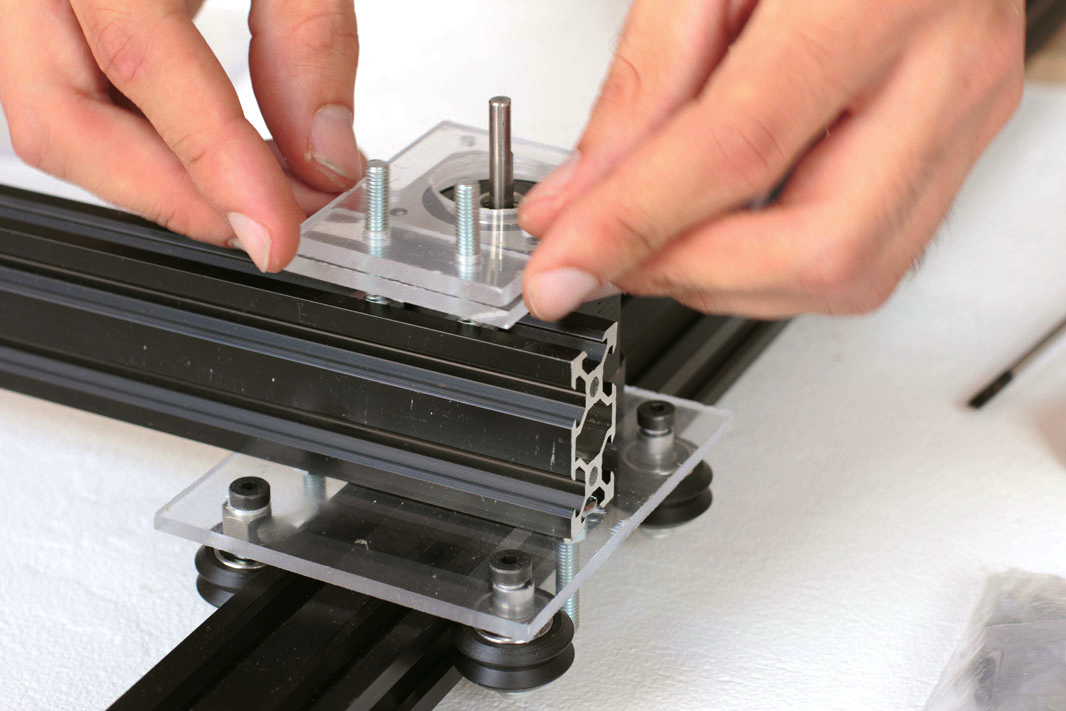
Assembling the motor - Team Spam - 2014
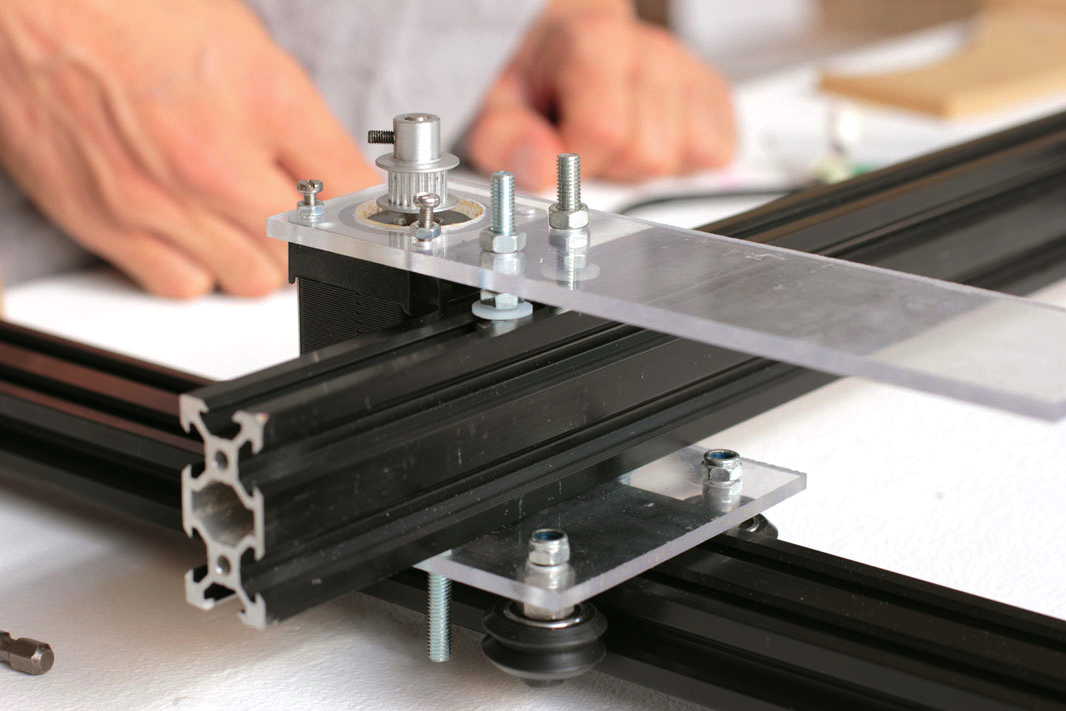
Motor Reverse Angle - Team Spam - 2014
One noticeable difference between our first prototype and SAM version 1.0 is that it is much bigger. We now have a drawing surface of 800mm x 800mm which is a neat format with a lot of potential. SAM is growing up and our hardware design is nearly coming to a close. One last problem to solve remains: What will SAM's hand look like? Aha, suspense our dear friends. Keep posted to find out if SAM will make it to the World Cup final shootout or end up on the bench of reserves.
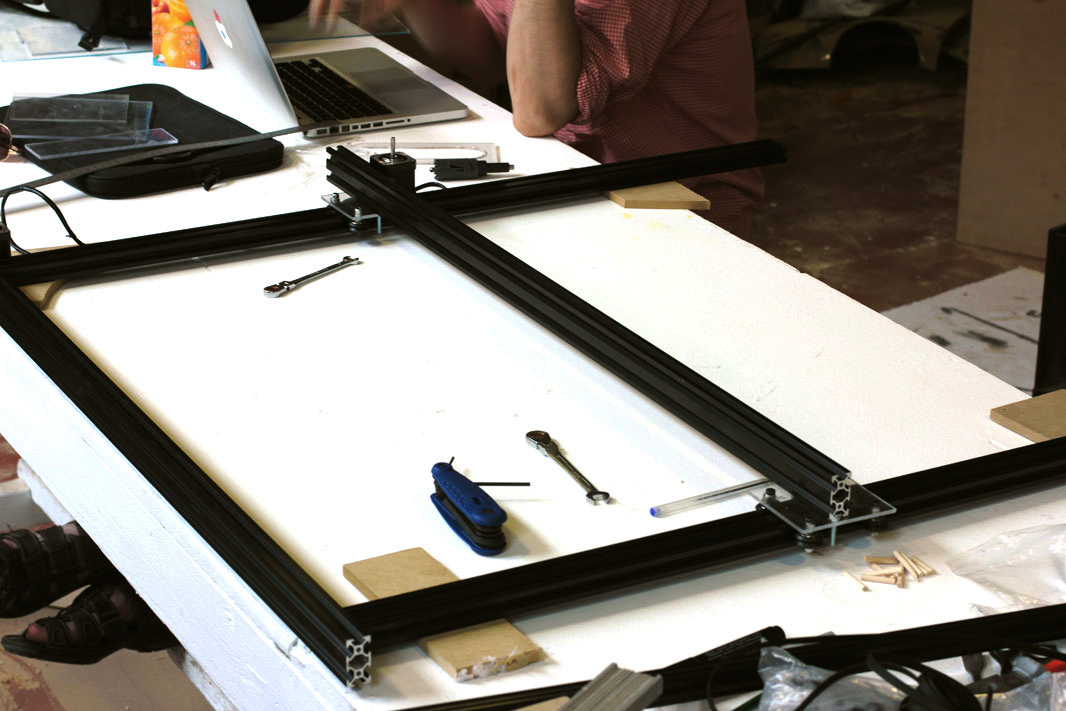
SAM has eaten the essential greens and consequently takes up more space
Makers
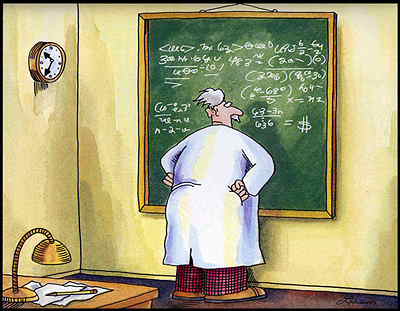
Einstein discovers time is money - Larson
What have we learned ?
A modular system saves time and energy but drawing up some plans to begin with is an essential part of the design process that helps in calculating the correct measurements and placement of components. It is also an important aid in establishing a budget for the required materials to build ya machine. The intricacies of making a hand mechanism that can adapt to different instruments as well as its environment will be a mission for NASA (Node Assisted Semantic Application). Just so happens that one half of Team Spam will be making a visit to the country of robots to investigate further.
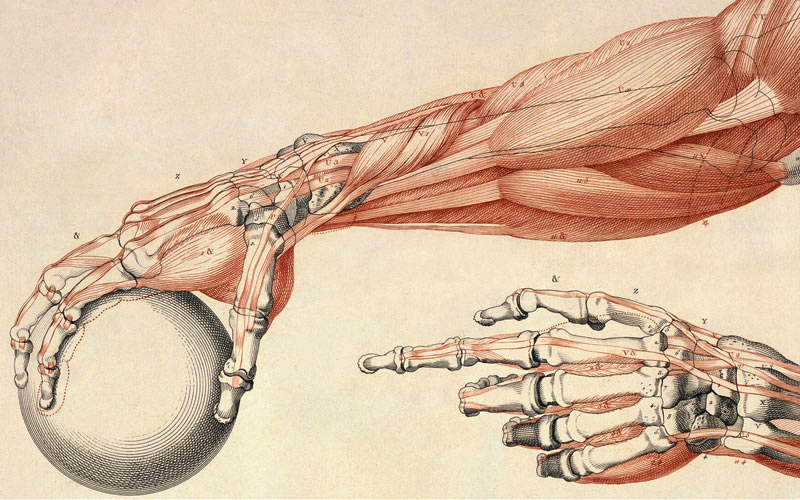
SAM's hand anatomy study - Team SPAM - 2014